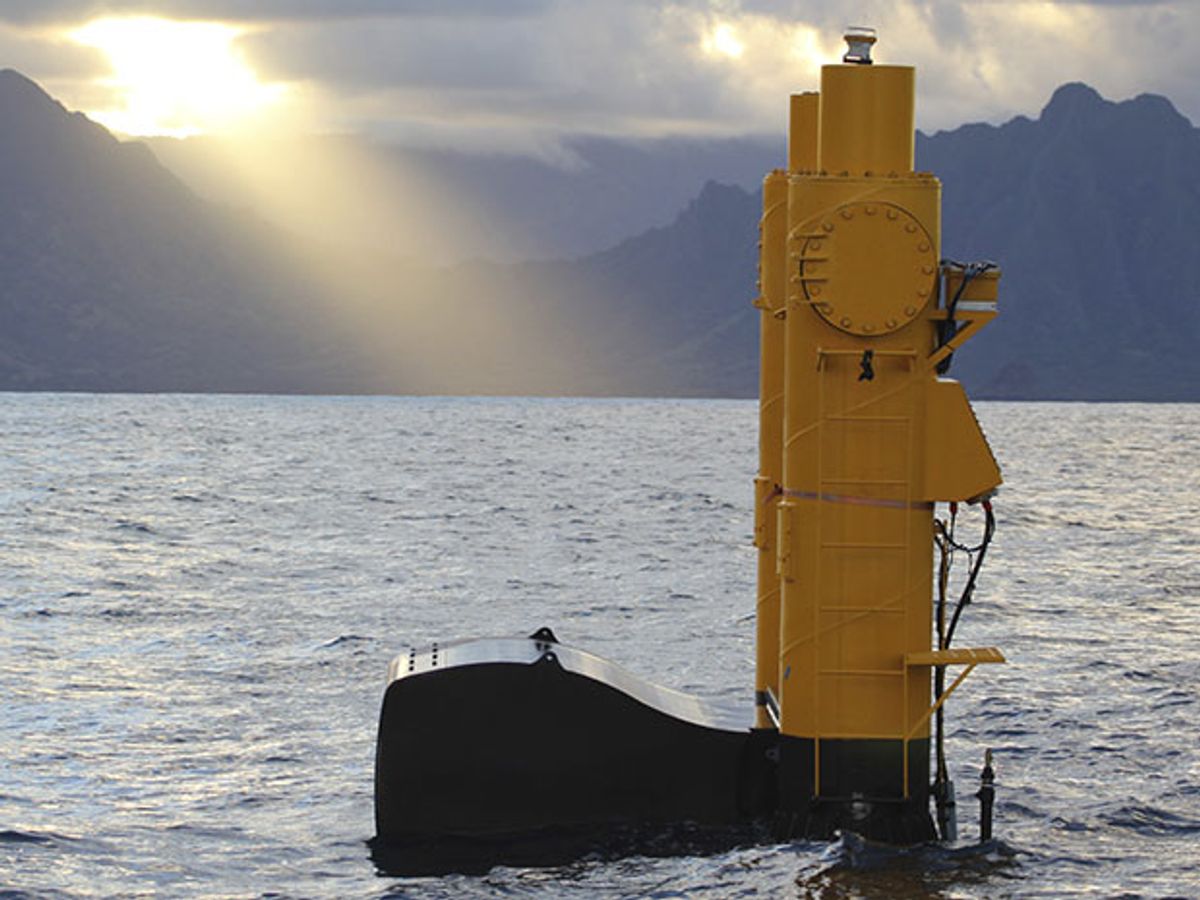The U.S. Department of Energy (DOE) has launched a new wave power device to bring renewable power to the island of Oahu in Hawaii.
Northwest Energy Innovation has developed a float that is attached to a hull under the water. The device captures both the vertical and horizontal motion of the wave, and the energy that is captured is the result of the relative rotation between the hull and the float. The energy is then transferred via a cable to land.
The device, named Azura, will be installed at the U.S. Navy’s Wave Energy Test Site in Kaneohe Bay. It will be independently tested by the University of Hawaii.
The 20-kilowatt demonstration project will run for one year. It is the first time a grid-connected, wave energy device has been deployed and independently tested for that period of time in the United States, according to the DOE.
Earlier this week, the DOE announced more than 90 teams for its Wave Energy Prize, a design-build-test competition to develop game changing wave energy conversion devices. The total prize will be worth about $2 million. The $2 million is part of about $26 million that the DOE has spent on developing wave and tidal energy projects in the past three years.
Despite the DOE’s ongoing support of marine and hydrokinetic technologies, it’s been a slow, bumpy road without major success stories so far.
The lack of progress is not limited to America. There have been essentially no large-scale wave power facilities installed worldwide with the exception of one off the coast of Portugal, as IEEE Spectrum noted last fall. Even so, many countries, including the UK and China, continue to invest in different technologies with the hope for a breakthrough.
There is no shortage of designs to capture the ocean’s energy. In China, for example, a US $30 billion tidal wall is undergoing a feasibility study. In Hawaii, Makai Ocean Engineering is taking an entirely different approach.
The firm is building an ocean thermal energy conversion (OTEC) plant that leverages the difference between warm surface ocean water and colder, deep-sea water to heat and condense ammonia to drive a turbine. The first operational OTEC plant, however, could be off the shores of Martinique in the Caribbean.
The DOE claims that extracting just 5 percent of the ocean’s energy potential around the US could power 5 million homes. But finding technology that can meet even that small potential at a cost compared to conventional fossil fuel generation, or the falling cost of wind and solar, has been difficult.
When completed, for example, the plant off of Martinique would supply about 11 megawatts of energy, the equivalent of about two of the world’s largest offshore wind turbines or enough energy for 10,000 homes.



